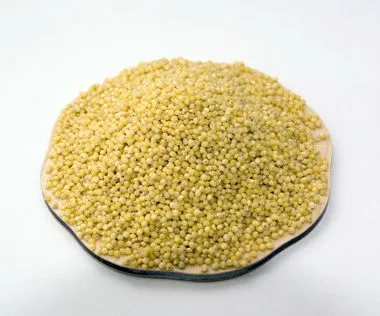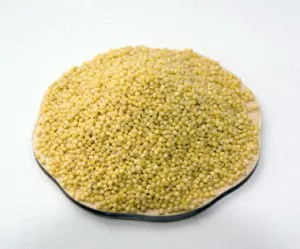
- Share on Facebook199
- Share on Pinterest
- Share on Twitter
For those making the switch to a gluten-free lifestyle, saying goodbye to bread, baked goods and pastas may be one of the hardest steps. But just because you’re choosing to either eliminate or cut back on wheat doesn’t mean you have to kiss your favorite meals and snacks goodbye. Check out some of these gluten-free flours and how to use them.
Amaranth
Related to spinach, beets and pigweed, amaranth seed can be ground into a nutty-flavored flour. It browns quickly and tends to form a nice crust. It works best when combined with other gluten-free flours in recipes for pizza crusts and breads.
Buckwheat
Despite its name, buckwheat contains no wheat. Rather, this highly nutritious relative of the rhubarb family comes in both light and dark varieties. Unlike some flours, buckwheat provides protein, fiber, vitamins and minerals and is most often found in Japanese-style soba noodles.
Garbanzo Bean
Garbanzo bean (or chickpea) flour provides a solid helping of protein and fiber to gluten-free recipes. It is often combined with fava bean flour. Bean flours provide a sweet flavor, but should be combined with other gluten-free flours as some people find too much can cause digestive upset.
Millet
Perhaps one of the oldest human-consumed grains on the planet, millet is a powerhouse of nutrition. When ground into flour, millet provides a sweet flavor and is best used in baked goods as it provides a sought-after crumbly texture. You can also beef up the vitamin content of many gluten-free baked goods by adding a dash of this protein-packed powder.
Rice
Rice flours come in several varieties. Brown and wild rice flours add higher nutritional value, while white rice flour provides baked goods with a sweet nutty flavor. Sweet rice is sometimes referred to as “glutinous rice” due to the gluten-like texture it adds to recipes. A combination of rice flours will provide a better texture and nutritional content to gluten-free baked goods.
Quinoa
Though quinoa is often used as a pasta substitute, it is actually a seed that provides a wealth of nutrition. As a complete protein, quinoa provides all of the essential amino acids and the entire seed is quite versatile, standing in for couscous, oats, barley and rice in a wide range of dishes. As a flour it can be bitter and is best combined with a variety of gluten-free flours to boost nutrient content.
 Tips For Selecting Gluten-Free Flours
Tips For Selecting Gluten-Free Flours
- Avoid selecting your flour from bulk bins as cross-contamination from scoops can occur.
- Select organic whenever possible.
- If you’re new to gluten-free cooking, it’s best to start with a blend of flours until you are more familiar with their tastes. Several brands offer pre-blended packages for optimum flour flavor and consistency.
- Gluten-free doesn’t mean calorie-free or sugar-free or healthy. A cookie is a cookie whether it contains gluten or not so always consume baked goods in moderation.
-The Alternative Daily
Sources:
http://www.webmd.com/digestive-disorders/celiac-disease/features/gluten-free-flours
http://glutenfreecooking.about.com/od/glutenfreeingredients/tp/20-Gluten-Free-Flours.01.htm
http://www.thekitchn.com/glutenfree-flour-substitutes-w-137056
http://www.csaceliacs.info/grains_and_flours_glossary.jsp
- Share on Facebook199
- Share on Pinterest
- Share on Twitter

